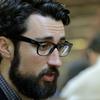The 2016 Canadian census results were released on May 3 and have revealed that there are a greater number of older adults than children, for the first time in census history. Statistics Canada reported that there were 5.9 million Canadians aged 65 and older, compared to 5.8 million Canadians aged 14 and under. As demonstrated in a striking infographic, there has been a remarkable shift in the age-distribution of the Canada population over the past 150 years (Figure 1).
Drivers of this demographic shift have been the post-World War II baby boom and bust, which lasted from 1946 to the mid-1960s and the mid-1960s to the early 1970s, respectively, and decreases in fertility. With the first of the baby-boomers turning 65 in 2011, Canada experienced a 20% increase in the number of older adults, the largest increase in this demographic group in the preceding seven decades. By comparison, the number of children increased by just 4.1%. As highlighted in previous Oxford Institute of Population Ageing Blogs, longevity is a driving force behind the increases in numbers of older adults, but equally, decreases in fertility (which have been declining since the 1970s) are also driving this relationship. As more of the baby boom generation reaches the 65 year threshold, they have greatly outpaced the numbers of children being born; this has resulted in seniors representing 16.9% of the population and children just 16.8%.
The distributions of ageing Canadians, however, is not equal across the provinces and territories. To have an interactive look at how each province and territory compares, Statistics Canada has provided an engaging interface that allows the user to compare any combination of provinces and territories with each other, providing the user with a breakdown by age bracket and sex. The Eastern provinces, notably the Maritimes, i.e. Newfoundland and Labrador, Prince Edward Island, Nova Scotia, and New Brunswick, have much older populations than their western, i.e. British Columbia and Alberta, and northern, i.e. Yukon, Northwest Territories, and Nunavut, counterparts. Compared to the Canadian average (16.9%), my home territory, Yukon, recorded just 11.9% of its inhabitants as being aged 65 and above. The territories experience both lower life expectancy and higher rates of fertility, resulting in the youngest populations in Canada. Of note, Canada’s youngest territory, Nunavut, also boasts the youngest population, with just 3.8% of inhabitants aged 65 years and older.
The implications of an increasingly ageing population in Canada, as across the globe, are widespread and varied. From a healthcare perspective, there will undoubtedly be increases in the proportion of individuals requiring care due to age-related diseases and functional declines. Given that Canada has a universal healthcare system, increases in government spending on these resources will be unprecedented. Similarly, the physical infrastructure to house the increasing numbers of older adults will pose challenges. Although most older adults are localised to urban areas, given the vast geographic spread in Canada, accommodating individuals located in rural or sparsely populated areas will become increasingly challenging. In the face of unprecedented increases in the numbers of older adults in Canada, innovative solutions will need to be devised to keep ageing Canadians (true north) strong and free.
Figure 1. Historical Age Pyramid

About the Author
Theodore D Cosco joined the Oxford Institute of Population Ageing in 2016 as a Research Fellow. He holds a Canadian Institutes of Health Research Postdoctoral Fellowship to conduct a project entitled “Resilience and healthy ageing across the life course” in conjunction with the MRC Unit for Lifelong Health & Ageing.
Comments Welcome:
We welcome your comments on this or any of the Institute's blog posts. Please feel free to email comments to be posted on your behalf to administrator@ageing.ox.ac.uk or use the Disqus facility linked below.
Opinions of the blogger is their own and not endorsed by the Institute
Comments Welcome: We welcome your comments on this or any of the Institute's blog posts. Please feel free to email comments to be posted on your behalf to administrator@ageing.ox.ac.uk or use the Disqus facility linked below.













